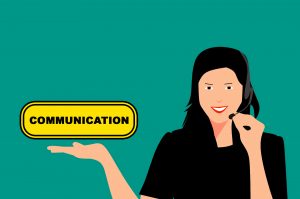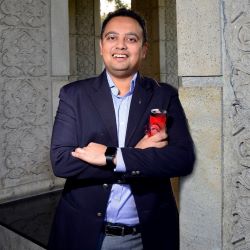Written by: Arpan Basu
About the author: Director Communications at Coca-Cola India and South West Asia

It’s a familiar feeling – you’re scrolling through your social media posts and you notice a pattern emerging. It’s subtle; you don’t really realise it till you make a conscious effort to really think about what you’re consuming, but you gradually realise that the curated content is aligned with your general worldview. It’s an experience similar to shopping online and OTT platform viewing. The recommendations and suggestions offered to us are closely aligned with the choices we have made on those platforms in the past. The more of something we choose, the more of it we are offered the next time.
Most of us rely on the digital platforms for our daily dose of news and happenings around the world. The always-on nature of this world means that we get access to what we need when we want it. Over the decades, with the Internet becoming more sophisticated, information has started being tailored especially for us. The footprints that we leave in cyberspace are used to provide us information that we seek. Websites use algorithms to filter out information based on what it thinks we will be interested in. This means that two people, looking for exactly the same thing on the Internet, might be shown different information.
The idea of personalised content sounds great – it takes away the bother of sifting through information that we may not necessarily need. But while this could seem like the perfect way to save time and consume more of what we want, it could lead to the narrowing of information that we use to form opinions and base our decisions on.
American activist and author Eli Pariser, co-founder of Upworthy, coined the term filter bubble to describe this state. According to Pariser, Internet users get less exposure to conflicting viewpoints trapped as they are in their own informational bubble. Over time, this leads to intellectual isolation. With the absence of varied information, filter bubbles cause limited understanding of issues, and lack of original thought. When we stay inside filter bubbles, we do not have adequate information to make optimum decisions.
Our biases and creation of echo chambers further fuel the problem. We tend to surround ourselves Virtually and Physically by people who agree with us. We become uncomfortable when our ideas are challenged and a counterview is offered. This polarization of thought can have serious consequences.
Putting the blame for our restricted perspectives and the problems that arise from that squarely on technology, however, is the lazy way out. As citizens of the world we enjoy certain freedoms— to access to multiple sources of information can help us escape these bubbles and ensure we get a balanced perspective. But for that, we need to make a conscious effort and dedicate ourselves to knowing all sides of a story.
A good place to start is by deliberately exposing ourselves to alternate viewpoints. This can be done by actively seeking out people and news sources that do not subscribe to our worldview and following them on a regular basis. The idea is to understand an issue in its entirety so that we can then arrive at an informed conclusion. It is also helpful to actively follow thought leaders who share balanced viewpoints on social media and news websites that promote a diversity of perspectives.
Another way is to become more discerning at analyzing our sources of information. Every day, fake news and distorted facts find their way to our chat platforms and social feeds. To counter this menace, a number of websites dedicated to fact checking have sprung up. It would serve us well to use these valuable resources to separate facts and fiction.
Finally, we must make a conscious effort to not cling to an opinion solely because it aligns with our beliefs. We should be open to dropping long held notions, no matter how uncomfortable it might be. To break through our filter bubble we must push past our comfort zones.
In India, the last few years have witnessed a massive shift in how we consume information; the Internet’s growth has been nothing short of explosive. In 2019, with more than 500 million active internet users, India stood only second to China. With increasing digital literacy, mobile penetration, and internet connectivity, our country is poised for further growth with an expected 974 million internet users by 2025. With digital platforms becoming primary sources of information, it will become even more important for us to be conscious of how we choose to access this information. It is our duty to arm ourselves with credible information and build a perspective that’s both balanced and fair.
